Loaded with 15 Sukhoi Su-33 and MiG-29K/KUB multirole fighters onboard and more than 10 Kamov Ka-52K, Ka-27, and Ka-31 helicopters to carry out airstrikes – Admiral Kuznetsov – Russia’s only aircraft carrier, has received instruction from President Vladimir Putin to pull out from Syria after accomplished its mission liberating the city of Aleppo.
At the recommendation of Defence Minister Sergei Shoigu on December 29, commander-in-chief Putin approved the decision to cut Russia’s military presence in Syria. A nationwide ceasefire in Syria took effect at midnight on December 30, 2016, thanks to a deal brokered by Russia with Iran and Turkey in what appears to be a solution to end the 6-year-old war.
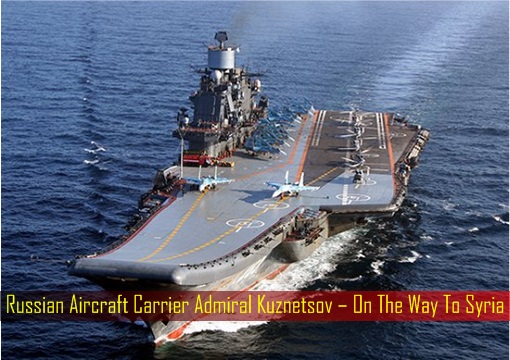
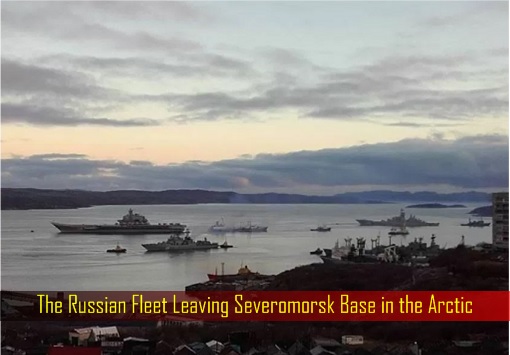
Russian President Vladimir Putin and Syrian President Bashar al-Assad had launched the biggest ground assault on a mission to crush all rebels, including those funded and trained by CIA, into oblivion in the “Battle of Aleppo“, backed by Russian warplanes together with Lebanese and Iraqi Shiite militias – Iran’s Revolutionary Guards.
Days ago, for the first time since the war began, Syrian Christians in the liberated city of Aleppo celebrated Christmas in a huge way. They were also shocked when President Assad and the First Lady visited the “Our Lady of Saidnaya Monastery” in the predominantly Christian town of Saidnaya on Christmas Day on December 25, 2016.
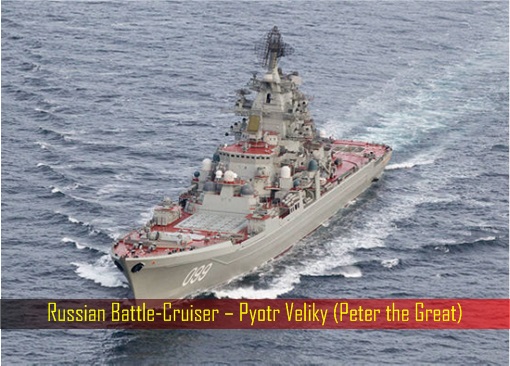
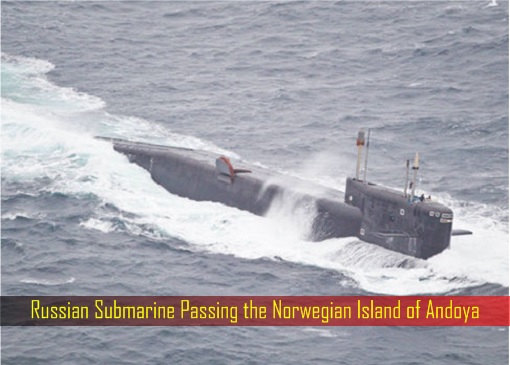
A Norwegian Lockheed P-3 Orion surveillance aircraft first caught Admiral Kuznetsov cruising in international waters off the coast of Northern Norway on October 17, 2016, while being escorted by the Pyotr Veliky (Peter the Great) battle cruiser, the Vice Admiral Kulakov destroyer, anti-submarine Severomorsk, frigate, supply ships and submarines.
Leading the Russian fleet of 8 fearsome warships, Admiral Kuznetsov had left a trail of panic among NATO nations during its journey to Syrian port of Tartus through the North Sea, Dover Strait and English Channel before heading south towards Mediterranean. The British Royal Navy was thrown into disarray as they scrambled to intercept the fleet.
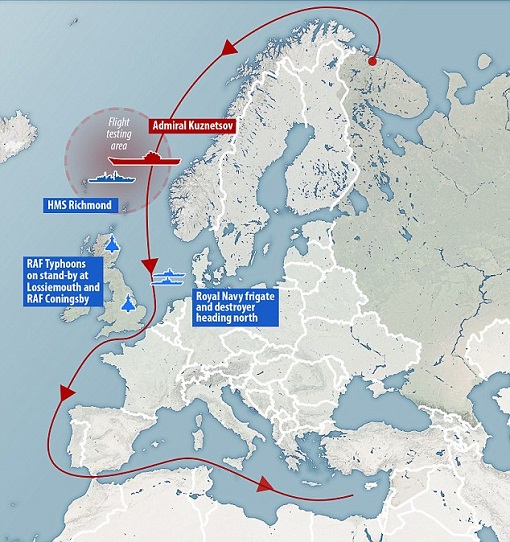
According to General Valery Gerasimov, the Chief of the Russian Armed Forces General Staff, the 55,000 tonnes nuclear-powered Admiral Kuznetsov will be accompanied by Pyotr Veliky (Peter the Great) battle cruiser and auxiliary ships to return from the Syrian port town of Tartus to its home base in Severomorsk, Russia.
It’s unknown if Frigate Admiral Grigorovich – one of the most feared warships specifically custom-made for the Black Sea Fleet and designed for air defence mission, anti-ship and anti-submarine warfare – would be sent back home too. Armed with supersonic 3M-54 Kalibr missiles (NATO codename: “Sizzler”), Grigorovich was subsequently sent to join Admiral Kuznetsov.
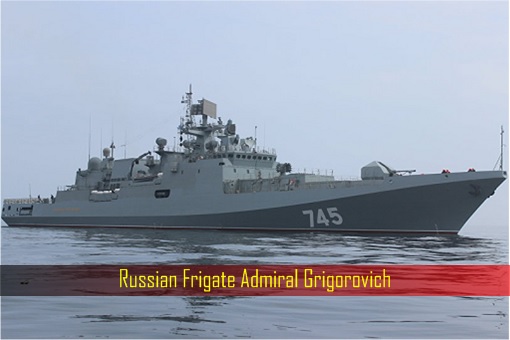
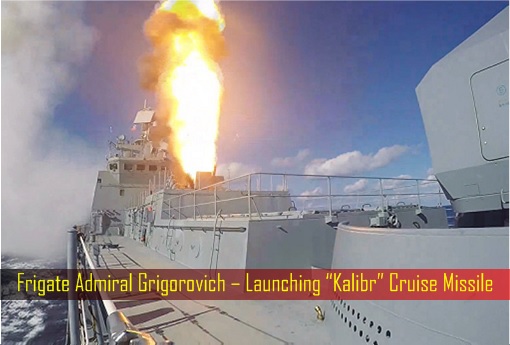
Commander of the Russian forces in Syria, Col. Gen. Andrey Kartapolov, revealed that the Russian fleet led by aircraft-carrier Admiral Kuznetsov conducted 420 sorties (including 117 at night), destroying 1,252 terrorist targets over 2 months of its deployment in Syria. Before leaving for home, the Russian has put in place a unified air defence system in Syria.
In 2015, the Turkish air force downed a Russian Su-24 bomber jet over the Turkish-Syrian border, claiming that it violated Turkish airspace. However, the Russian denied the claims and called the incident a “stab in the back from the accomplices of terrorists.” Putin brilliantly turned it into an opportunity – the deployment of “Triumf” S-400 SAM (better known to NATO as the SA-21 “Growler”).
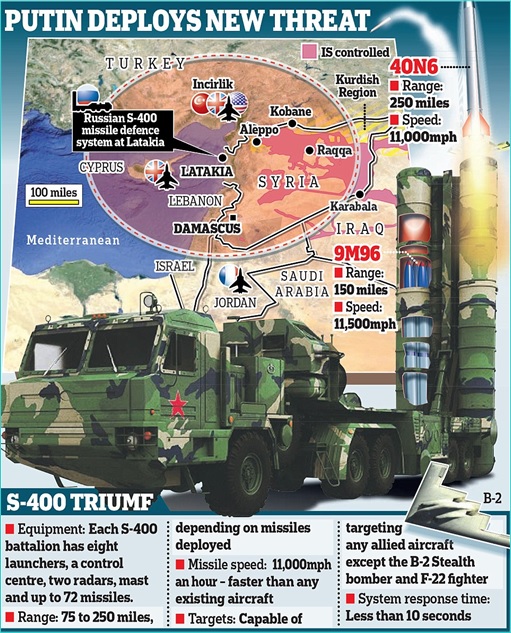
Depending on the types of missile, the S-400 defence system targets 400 kilometres in distance and heights of 27 kilometres (up to 56-km). The Russian-made surface-to-air missile system is now protecting 75% of Syrian territory. Upon deployment of the S-400, the U.S. and Turkish Air Force had immediately stopped sending fighter jets into Syria.
However, “Triumf” S-400 SAM wasn’t the only defence system the Russian had deployed in Syria to protect its assets. When Obama sent F-16 fighter jets and A10 ground attack aircraft on a mission to bomb Syrian Army, killing 62 and injured more than 100 Syrian soldiers, the U.S. president called it an “accidental and unintentional” airstrike, despite the fact it was a deliberate provocation.
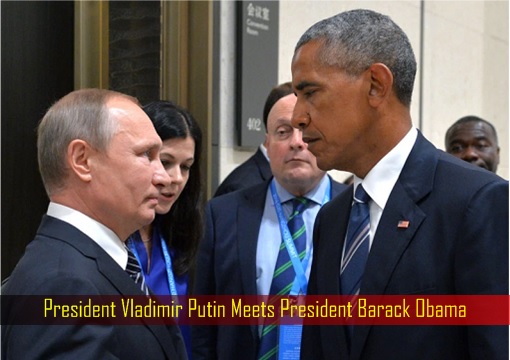
Again, Putin cleverly turned Obama’s dumb move into an opportunity. He played the Plutonium Management and Disposition Agreement (PMDA) card where Moscow conveniently accused Washington of failing to fulfil its obligations to dispose of at least 34 tons of weapons-grade plutonium. Putin quickly signed a decree suspending the Washington-Moscow agreement signed on April 13, 2010.
In a calculated move by Putin, Obama administration was trapped into suspending talks with Russia over the war in Syria. Thereafter, Obama foolishly said his administration was considering other options for Syria, including the provision of more powerful weaponry from the U.S. or other allies such as Saudi Arabia and Turkey to U.S.-endorsed Syrian rebels.
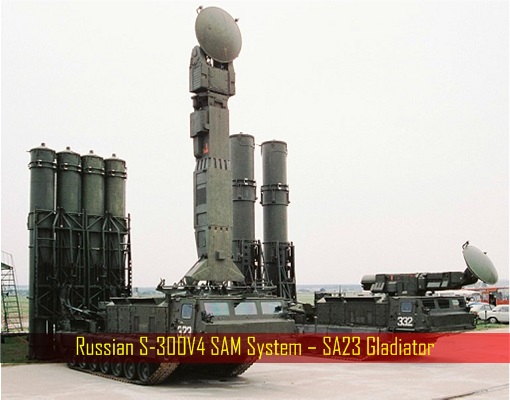
Under the pretext of protecting its’ assets from CIA-sponsored rebels as well as potential airstrikes from the U.S., Turkey, Saudi Arabia and other allies; Moscow deployed the S-300VM (known by NATO as “SA-23 Gladiator”) advanced anti-missile and anti-aircraft system to Syria. The deployment was in addition to the S-400 already deployed in Syria.
Arrived quietly over a weekend “on the docks” of a Russian naval base along Syria’s Mediterranean coastal city of Tartus, the S-300VM is an upgraded version of S-300V and is feared for its mobility or portability, not to mention its ability – hypersonic missiles designed to engage aircraft, cruise missiles and even intermediate-range ballistic missiles.
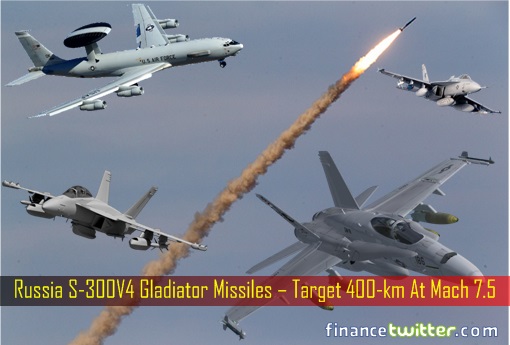
Also called Antey-2500, the sophisticated SA-23 system was deployed outside its borders for the first time by Russia. Believed to be of the S-300V4 missiles version which has a range of 400-km at Mach 7.5 or a range of 350 km at Mach 9, it could shoot down airborne early warning and control aircraft, including AWACS (Airborne Warning and Control System).
After revealing that the Russian fleet led by aircraft-carrier Admiral Kuznetsov is leaving Syria, Col. Gen. Andrey Kartapolov also disclosed that the Russian task force in Syria has created a unified air defence network using “advanced S-300” and S-400 “Triumf” surface-to-air missile systems. Admiral Kuznetsov’s mission was more than launching airstrikes against ISIS.
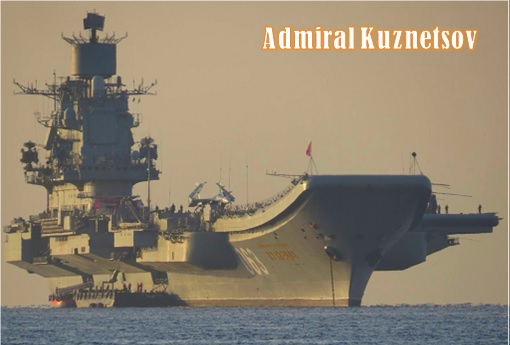
Admiral Kuznetsov and Hmeymim Airbase in Latakia were used jointly to establish a close interoperability system between the Russian Aerospace Forces and the country’s own Bastion coastal defense systems. Essentially, the Russian has created a unified air defence network to reliably defend Syria against aerial attacks both on land and at sea – based on S-400 and S-300VM systems.
Other Articles That May Interest You …
- Christians & Christmas In Syria – What Obama & Media Don’t Want You To Know
- Kalibr Missiles On Its Way – Russia Is Sending Frigate Admiral Grigorovich To Syria
- Panic!! Russia’s Aircraft Carrier Leading A Fleet Of Warships Towards Mediterranean
- Checkmate – Russia Sends New Weapon “S-300V4 Gladiator” To Syria
- “Battle Of Aleppo” – Russia Challenges U.S. To A War … If Obama Dares
- Here Are Russia’s 3 Awesome Weapons Which The U.S. Is Absolutely Terrified Of
- Putin To Send Aircraft Carrier To Syria – To Wipe Out ISIS, To Humiliate NATO
- Not Over Yet – Here’re Some Of Russia’s Awesome Military Hardware In Syria
- From Russia With Love – Putin Sent “Bear”, “Backfire” & “Blackjack”
- Russian Jet Shot Down – How Putin Brilliantly Turns It To His Advantage

|
|
January 7th, 2017 by financetwitter
|


|

|

|

|

|

|




























Comments
Add your comment now.
Leave a Reply